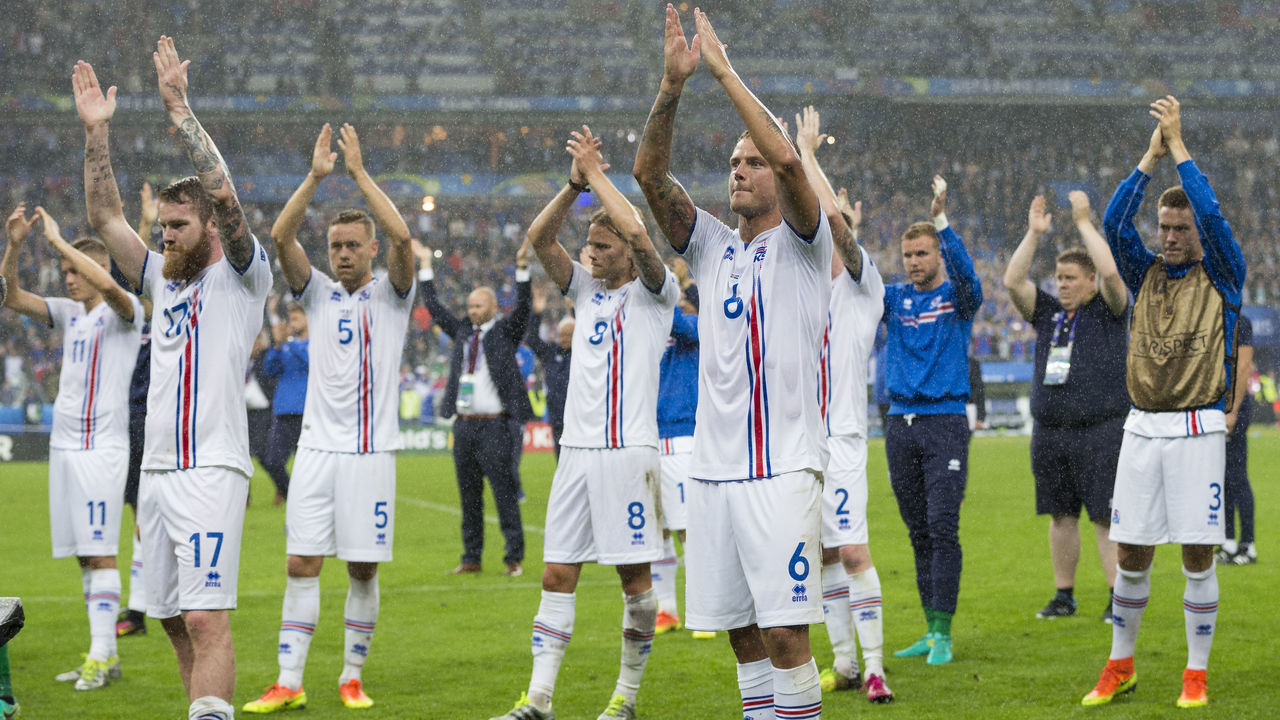Floor is lava: How did a weather-beaten outpost like Iceland get so good?
Iceland is a place where fire and ice can coexist, but where the wind, impenetrable fog, and crashing waves hint at the relationship's underlying discord. Nature greatly outmuscles humankind - it's little wonder the country is home to fewer people than Anaheim, Calif. - but its unique scenery makes the outpost an increasingly appetising venue for tourism.
And more airlines are landing there now. The gurgling and blurting geysers, glaciers, waterfalls, pools and rivers warmed by the country's volcanic stomach, and a landscape that can quickly flip from lush English countryside to Mars-like terrain are more accessible. Reykjavik is cashing in on the influx of visitors and developing into an important western hub.
But for football, the gravelly surfaces and fusillades of snow aren't conducive to a decent team. In 2012, Iceland sunk to lower than 130 in FIFA's ranking system. The national team's ineptitude had almost become a source of pride. Reykjavik brewery Borg Brugghus collaborated with Danish counterpart Norrebro Bryghus a few years ago to create an unusual white stout called 2-14. It was a nod to the scoreline of Iceland's humiliating 1967 loss to Denmark.
By the time the first few pints were pulled, a revolution was already bubbling under Iceland's ominous earth in the shape of huge indoor pitches powered by geothermal energy. In under 20 years, over 150 of these hangars have been hauled up around the country, allowing football to be played amid ferocious gusts and sub-zero temperatures. During less gruelling times of the year, children are seen playing out at midnight in the strange, beige light.
Former Walsall striker Siggi Eyjolfsson is a driving force behind the project, and the first success stories were told when the women's team earned qualification for the European Championships of 2009 and 2013.
A 2-0 play-off defeat to Croatia, denying the men's team a place at the 2014 World Cup, only served as encouragement for Icelanders. But then, why would it deter a population that has determinedly farmed the dangerous North Atlantic waters for generations? Icelanders don't just survive; they get up and brace themselves with their sharpened spears. The team's playing style reflects the locals' industriousness and hate of waste, and was rewarded by a place at Euro 2016 for the men's contingent.
Iceland finished above eventual winner Portugal in Group F at the tournament, and just one goal shy of quartet-topping Hungary. Then, strakarnir okkar dealt English football one of the most embarrassing nights in its history. A 2-1 win for the minnow meant Iceland had stolen the show at Euro 2016; the triumphant roar when host France dumped Iceland from the quarter-finals eventually petered out, surrendering to the enduring racket from a Nordic contingent sounding their appreciation.

(Photo courtesy: Getty Images)
Not only did Iceland expose the ineptitude of then-England handler Roy Hodgson's tactics in Nice, it also forced a belated inquest into how England was developing - or, rather, not developing - footballers. There is one UEFA-trained coach for every 825 Icelanders, but in England, each is shared between 11,000 people. English schoolkids are often coached by a reluctant headteacher.
"You don't know where the next Eidur Gudjohnsen is going to come from," Eyolfsson said before Iceland's Euro 2016 campaign, referring to the country's all-time top scorer, a former star for Chelsea and Barcelona.
"It could be a small village, so you need a qualified coach in that village."
The country's natural conditions, the resulting national psyche, and the determination to give every child access to a high-quality coach aren't the only ingredients in this footballing formula. The links between the fans and team mirror those shared at community-conscious clubs below the elite level in Europe. It barely exists in the international game.
The thunderclap - when the fans echo a heartbeat-like drum that gradually tightens to become a cacophony of noise - is often performed by both the players and supporters, captured the imagination at Euro 2016, and has since seen reenactments at grounds across the world.
However, the tightest bond rests between the fans and head coach Heimir Hallgrimsson, a dentist by day. Before matches, Hallgrimsson meets Iceland's followers in a bar to explain his tactical approach. When he first did it, he was addressing just seven people; now, up to 700 people are rammed into the establishment. Hallgrimsson's game plan has never been leaked.
"It wouldn't probably be possible unless it's a community that trusts each other like here," Hallgrimsson told Sports Illustrated. "There's no media allowed. Nobody is recording or taking pictures."
Gareth Southgate can let the English media play legs of darts with his players as much as he wants at the team's Repino base, but an explanation of his schematic in a pub would be filmed on a forest of phones and likely denigrated by a drunken few. The country is bustling, and the fallouts are catastrophic.
For Iceland, being small is a strength.
HEADLINES
- Ayton leads Lakers past Blazers without Doncic, Reaves
- Morant unsure if he can recapture joy for basketball: 'We'll see'
- Jones hints Cowboys 'made a trade,' reportedly pursuing defenders
- Cardinals' Brissett, Harrison dominate Cowboys' defense in MNF win
- Thompson's season-high 27 points gives Rockets 4th straight win